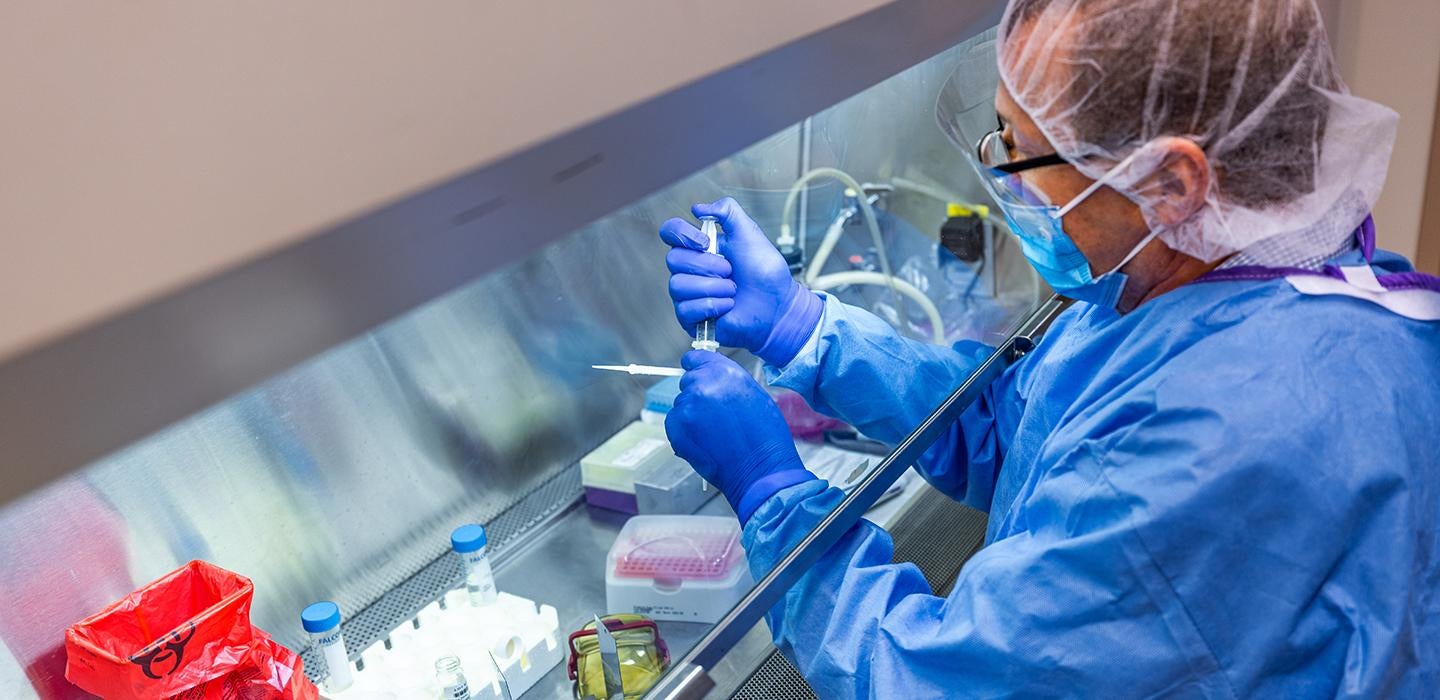
Subscribe to Pittwire Today
Get the most interesting and important stories from the University of Pittsburgh.The University of Pittsburgh has announced a $100 million grant from the Richard King Mellon Foundation — the nonprofit’s largest single-project investment in its 74-year history — to fill in a vital missing link in the region’s economy.
The grant, to be disbursed in $10 million increments over 10 years, will help build a highly specialized biomanufacturing facility on an old mill site and former brownfield in Pittsburgh’s Hazelwood neighborhood. Called Pitt BioForge, this facility will leverage the cutting-edge biomedical research conducted at Pitt and the world-class clinical care offered at UPMC. This project will bring an entirely new commercial manufacturing sector to Pittsburgh and, if all goes according to plan, increase the economic opportunity for residents and families in and around Hazelwood.
“The University of Pittsburgh is a leader in biomedical research, but we could not have made this leap without the Richard King Mellon Foundation’s transformational gift,” said Chancellor Patrick Gallagher. “The poetic symmetry of building the future of manufacturing in the shadows of an old steel mill isn’t lost on us — or anyone in Pittsburgh. We were the city that built the world. Now Pittsburgh can be the city that heals the world.”
Richard King Mellon Foundation Director Sam Reiman is equally optimistic about the project’s catalytic possibilities. “The foundation is making a historic bet on Pittsburgh to lead nationally in the life sciences,” Reiman said. “If COVID-19 taught us anything, it’s that we need to discover and manufacture health care advances right here at home. And we are even more eager to lead in this sector because of its potential to generate family-sustaining job opportunities that are accessible to all our communities.”
The planned 200,000 to 250,000-square-foot Pitt BioForge facility will directly benefit researchers like Leah Byrne, assistant professor of ophthalmology in the School of Medicine and an expert on gene therapy. Byrne’s research aims to restore sight to patients using engineered viruses to deliver snippets of DNA directly to cells in the retina to treat a wide variety of retinal diseases.
Currently, no facility in Pittsburgh, and only a select few worldwide, can create the required tools at the scale she needs.
“One of the major bottlenecks in bringing gene therapies to the clinic is actually producing clinical-grade viral vectors. It’s a huge problem in the field,” she said. A costly process with long wait times, manufacturing the key components of therapies means contracting with a small number of specialized facilities across the country.
By bringing biomanufacturing to Pittsburgh, these significant supply chain hurdles disappear. One direct upshot of this, which will be life-changing for many and even lifesaving for some, is that patients will be receiving therapies and treatments on the very cutting edge of personalized medicine — and faster than ever before.
“The Pitt BioForge is going to allow us to actually produce the therapies we’re developing here at the University of Pittsburgh and then hopefully bring those forward to clinical trials,” Byrne said. “This is going to be an unprecedented opportunity for myself and for other people at Pitt who are doing this type of translational research.”
The ability to work closely with the teams manufacturing the tools used in advanced therapies will also avoid wasted effort and decrease costs, as well as allow researchers to develop new technologies, Distinguished Professor and Chair of Ophthalmology José-Alain Sahel said.
“Being fully engaged in the manufacturing process and being able to really monitor what’s going on is key for success and would enable a process that is efficient, safe, reliable, adaptive and cost effective,” he said.
Pitt BioForge’s benefits will extend to research beyond Byrne and Sahel’s vision work. It will also support other types of gene therapy and new ways to deliver therapies, like the microneedle arrays pioneered by Department of Dermatology Professor and Chair Louis Falo.
“This type of facility would broadly facilitate the commercialization of novel technologies and drugs, including new cellular therapies, antigens for vaccine development and new devices that can deliver therapies in a manner that is more effective, safe and patient friendly,” Falo said.
The capacity to create personalized, patient-ready treatments and therapies will support homegrown companies spun out from the University, draw companies into the region and create an innovation environment to keep Pitt’s growing roster of biomedical startups from spinning too far away — or even out of state.
“Pitt researchers are already making discoveries in basic and clinical sciences targeting a wide range of diseases, and our new biomanufacturing facility will represent an important new way we can collaborate with our partners at UPMC and industry to bring those treatments to patients,” said Anantha Shekhar, senior vice chancellor for the health sciences and the John and Gertrude Petersen Dean of the School of Medicine. “It’s one more step toward establishing Pittsburgh as a world-class city for the life sciences.”
The location for the facility, Hazelwood Green, is a 178-acre former industrial site that is now being developed as a mix of office, retail and community space.
Both the University and the Richard King Mellon Foundation remain committed to partnering with Hazelwood leaders and residents to ensure that the local community reaps the benefits of these changes, too.
The significance of this investment is clear to Richard A. Mellon, chair of the Richard King Mellon Foundation Board of Trustees. “We are convinced this project is a generational opportunity to create shared prosperity at scale for the people of Southwestern Pennsylvania,” he said, “and to cement Pittsburgh’s status as a national and global leader in one of the most important economic sectors of our time.”


